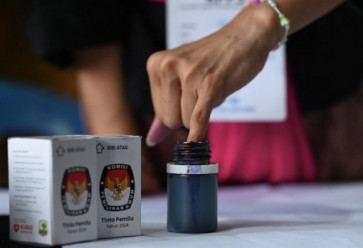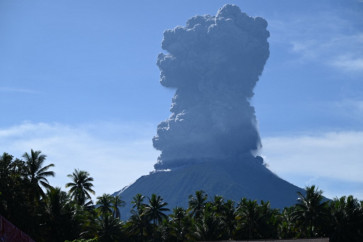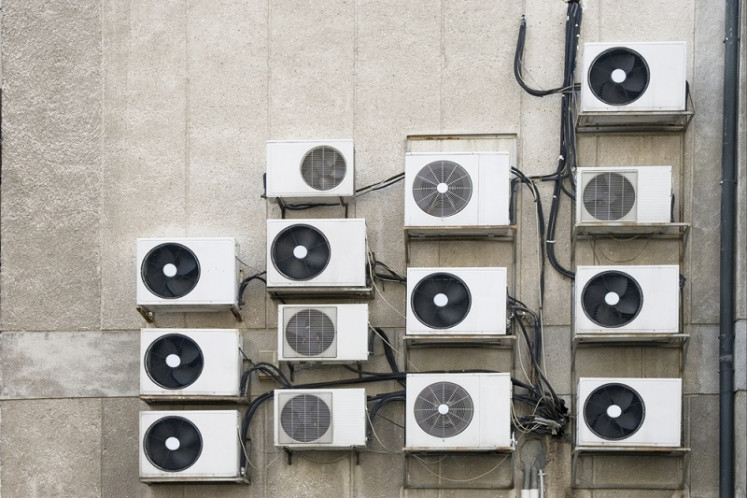At first sign of trouble, don’t wait on tsunami warning. Just run to higher ground: BMKG
Meteorology, Climatology and Geophysics Agency (BMKG) chairwoman Dwikorita Karnawati told people in Maluku that when an earthquake strikes, do not wait for the BMKG’s tsunami warning
Change Size

M
span>Meteorology, Climatology and Geophysics Agency (BMKG) chairwoman Dwikorita Karnawati told people in Maluku that when an earthquake strikes, do not wait for the BMKG’s tsunami warning.
Just run to higher ground, she said at the launch of a Sekolah Lapang Gempabumi (SLG) (disaster mitigation school) in Ambon, Maluku, on Monday.
“Based on our calculations, there is a very narrow evacuation window period during an earthquake. We’ve even been able to predict that, in certain areas, a tsunami could possibly strike as soon as two minutes after the quake,” she said in a statement made available to The Jakarta Post on Tuesday.
Dwikorita called on the public to start evacuating on their own as soon as an earthquake hit the region, saying that waiting for an early tsunami warning from the BMKG or the local administration could prove to be disastrous. She added that it usually took five minutes for an early tsunami warning to be issued, whereas the available evacuation window period was less than that.
“For people living on the coast, if you feel a strong quake immediately run to higher ground such as hills or even sturdy buildings. Waiting for an early tsunami warning is very risky,” Dwikorita said.
The BMKG has been under scrutiny after it revoked a tsunami warning in Central Sulawesi following a 7.4-magnitude earthquake. After it was revoked on social media on Sept. 28 last year, an actual tsunami swept Palu’s coastline. The disasters killed more than 2,100 people while about 5,000 were reported missing. Later, the BMKG explained that it had revoked the warning after the tsunami had receded in Palu.
To bolster disaster mitigation across the archipelago, the BMKG has established SLGs in various disaster-prone regions, including Maluku.
Dwikorita urged the people of Maluku to have competent mitigation and evacuation skills to reduce losses and damages in the event of an earthquake and ensuing tsunami.
The SLG program is expected to train the public in learning about and navigating evacuation routes during an earthquake and/or a tsunami in order to minimize casualties. The program was attended by 70 participants, consisting of members of the regional disaster mitigation agency, academics, law enforcement officials, journalists and members of the public.
Maluku was home to at least five possible tectonic quake epicenters, namely the Maluku Ocean Plate Subduction Zone, North Seram Subduction Zone, South Seram Fracture Zone, Banda and Weber Deep Subduction Zone and Aru Graben Zone, Dwikorita said.
She added that the province had a long history of tsunamis.
Tsunamis of various intensity and origin have struck the provincial capital of Ambon over 50 times. The biggest recorded one in the region occurred in 1674, which killed 2,322 people in Ambon and Seram.
Dwikorita said devastating tsunamis were not always preceded by strong earthquakes, urging people to evacuate immediately at the first sign of trouble.
“The tsunami that struck the Sunda Strait a few months ago was not triggered by a particularly strong tectonic quake. The tsunami in Palu also arrived much faster than was predicted,” she added.
Shortly after it hit beaches on the west coast of Java on Dec. 22, the BMKG’s Twitter account said it was not a tsunami but a tidal wave. “The BMKG has not recorded any earthquake occurring tonight. What happened in Anyer [Banten] and the surrounding area was not a tsunami, but a tidal wave. There is also a full moon tonight, which causes high tidal waves. Stay calm,” the BMKG stated on its Twitter account on the night of the disaster. The tweet has since been deleted.
Later, the BMKG confirmed that it was a tsunami.
Its geophysics division deputy, Muhammad Sadly, said in a statement the SLG program was also expected to bolster coordination between the regional disaster mitigation agency, the Indonesian Military (TNI) and the National Police in order to assist the public more effectively during an evacuation procedure.









